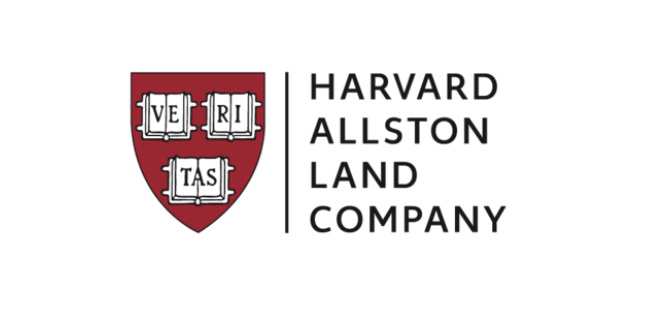How Harvard’s Enterprise Research Campus Is Reshaping Allston With Help From The Community

On Nov. 1, Harvard University celebrated the groundbreaking of its Enterprise Research Campus in Allston, Massachusetts — a significant step toward bringing to life a project that has been more than a decade in the making.
Plans for the project include a 17-story apartment building, four retail or restaurant spaces, 440K SF of labs, a 16-story, 250-room hotel, and public green spaces. Developer Tishman Speyer landed $750M in construction financing for the ERC — one of the largest CRE financing packages in the U.S. in 2023.
“The city, the university and the community have been working together on this for several years,” said Carl Rodrigues, CEO of the Harvard Allston Land Co. “We’ve made some remarkable progress this year, and I’ve enjoyed being part of that collective success. I look forward to continuing to set the bar high as this project continues.”
The ERC is an effort to create spaces where scientific discovery and research can inspire the development of applied technology solutions in fields like life sciences, computing and robotics, Rodrigues said. Harvard’s new Science and Engineering Complex, which opened in 2020, is down the street from the ERC site, and the Harvard Innovation Labs and Harvard Business School are also nearby.
Over the first of two phases of this project, developers will be building close to 1M SF of lab space. Rodrigues hopes that some of the companies that develop out of faculty research labs or the Harvard Innovation Lab will have a place to grow and mature in and around the Harvard research ecosystem.
“The spark for ideas or investigating concepts can start in a classroom or university laboratory, then these ideas move over to an incubator in the innovation lab and then, ideally, as these ideas take hold and spin out, the ERC will create space for their next steps,” Rodrigues said. “It will be a place for continual inspiration and innovation."
He added that community input was very important to the team behind the ERC. The Harvard Allston Task Force played a large role in shaping the project, articulating needs for the neighborhood and providing community feedback that helped to shape this first phase of the project. One particular aspect of the project that has been shaped by the community is the greenway, a series of connected open spaces managed by Harvard and designed to be a “hub of activity” with farmers markets, programming for the community and even potentially some small-scale concerts.
“It's really a place that I hope the community can benefit from, a space where neighbors can pop through, get a bite to eat, sit on a bench and enjoy a beautiful Boston day,” Rodrigues said.
Rodrigues has a background in affordable housing policy and served as chief of staff to the NYC deputy mayor for housing and economic development. He said he is particularly excited about the fact that 25% of the proposed 343 housing units on the site will be affordable to those making between 25% and 100% of the area median income, which, as Mayor Michelle Wu said at the groundbreaking ceremony, is the record for the highest percentage ever for a market-rate project in Boston.
“I think it's an extraordinary outcome partly because the lab component can help subsidize some of the affordability and make it all ultimately work,” Rodrigues said. “It could make a real impact in the neighborhood and allow more people to enjoy this new area.”
In the approvals phase of the project, Harvard committed $25M to an affordable housing fund to support affordable and homeownership housing creation and preservation in Allston-Brighton. While the city will ultimately decide how to allocate these funds, they will likely go toward acquiring properties and helping to subsidize additional affordable housing projects, Rodrigues said.
Attracting additional retail to the area is also a key part of Harvard’s plan, and 30% of the retail space in the project has been set aside for local small businesses. Rodrigues said this particular part of Allston hasn't had a lot of retail activity, and he has met with community members who are looking for a wider range of retail options.
He added that diversity, equity and inclusion have been a part of the ERC framework from Day 1, and the team has been thinking creatively about how to bring DEI into every aspect of the project. This means that along with taking traditional steps toward making sure that a significant percentage of project subcontractors are women- and minority-owned businesses, ERC stakeholders are going beyond what would normally be seen in a privately owned project.
“We have required a certain amount of the equity in the project to be sourced by minority investors,” Rodrigues said. “The idea here is that you cannot build wealth in these communities unless they have access to the same sorts of opportunities that other people use to build wealth for themselves and their families. We've had a tremendous amount of success with Tishman Speyer on this front to raise $30M in equity.”
In the end, Rodrigues said it is the overall context of Harvard’s development in Allston that sets it apart. He highlighted Harvard projects like the ERC, but also the recently approved American Repertory Theater, as keys to creating an emerging innovation and creative corridor in Boston.
This article was produced in collaboration between the Harvard Allston Land Co. and Studio B. Bisnow news staff was not involved in the production of this content.
Studio B is Bisnow’s in-house content and design studio. To learn more about how Studio B can help your team, reach out to studio@bisnow.com.

